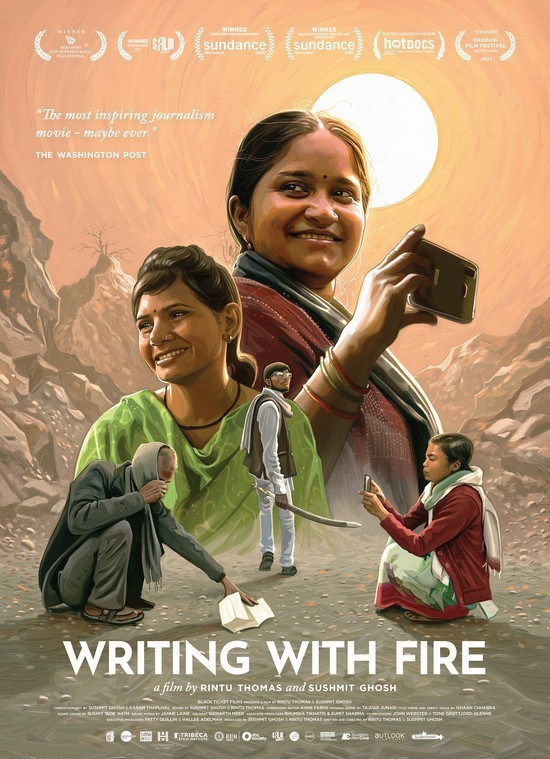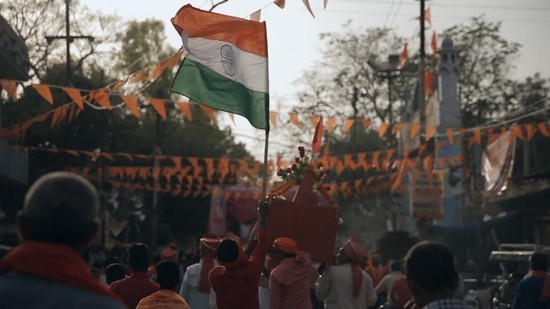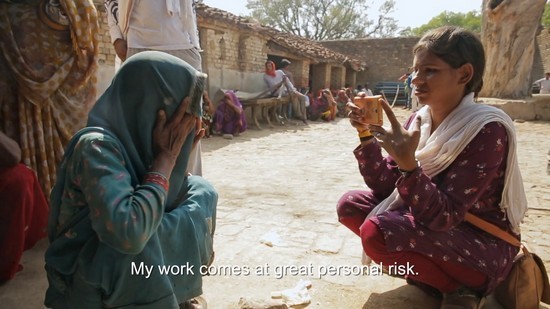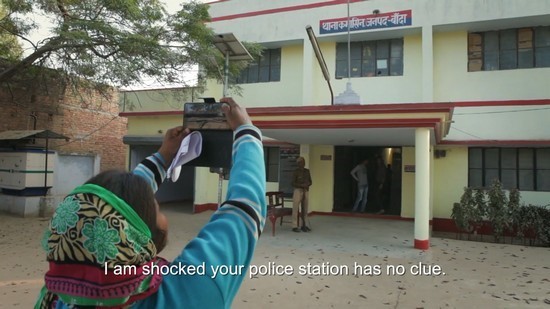Independent journalism is currently under threat in many parts of the world,
and in these trying times, journalists’ experiences can occasionally lead to
stories that are as compelling as the subjects they cover. That is especially
true of the staff at
Khabar Lahariya, India’s women-run news agency, which is
the subject of the Oscar-nominated documentary “Writing with Fire”.
اضافة اعلان
The film was
screened yesterday in an event organized by the Royal Film Commission in
cooperation with
UNESCO, celebrating World Press Freedom day.

Directed by
Sushmit Ghosh and Rintu Thomas, Writing with Fire is the first Indian
feature-length documentary nominated for an
Oscar. It follows the editorial team
of Khabar Lahariya in their transition from 14 years of print publication to
digital medium.
The film
chronicles the experience of several women on the outlet’s editorial team,
drawn largely from India’s oppressed Dalit caste, as they use smartphones, determination
and compassion to shed light on scandals and tell the truth to those in power.
Depicting the
staff of Khabar Lahariya’s struggles, Writing with Fire offers the audience a
glimpse into a world that may seem alien to those unfamiliar with India’s rigid
caste system and unique sociopolitical environment, but it also brings in many
familiar frustrations. For example, the challenges faced by women journalists —
particularly in patriarchal environments – are widespread and well documented.
The same is true about the difficulties many news outlets faced in
transitioning to an increasingly online and digitally oriented audience.

Journalism,
democracy, and justice form a trio often intertwined with the lives of the
three main protagonists, Meera, Suneeta, Shyamkali, whose visionary character
and impetuosity cannot leave the audience indifferent.
The opening scene
is as heartbreaking as it is disturbing, and immediately introduces the viewer
to the situation. The filmmakers keep their audience as close as possible to
the journalists by the use of a shoulder camera, bringing a sense of deep
intimacy, maintaining throughout the film a cycle of alternating feelings of
injustice and hope, thanks to Meera, Suneeta, and Shyamkali.
Showing everyday life to get justice
The rural region of
Uttar Pradesh, where the events are taking place, is
one of the most populous in India, and there is very little media coverage.
Yet, for almost three years, there have been problems like public sanitation,
corruption, rape of Dalit women and a rise in religious nationalism. They are
topics that the newspaper covers as a priority, but they can be dangerous.
 Changing society
Changing society
Writing with Fire is a story of power(s) and resistance, but there is a
universal dimension to their story.
Throughout the
film, the viewer feels how invested the
filmmakers have been in their attempt
to make these women known and to infuse the inspiration that emanates from
them. The film quickly takes over and gives the desire to stand up for oneself,
to fight injustice and to make heard the voices that are silenced.
Thomas and
Ghosh’s approach is personal and intimate. There is no distance to the subject,
and the film follows the newspaper’s journalists as they cover different
stories (a dangerous mine run by a “mining mafia”, an epidemic of raped
Dalit women, Dalit villages without indoor plumbing, and bigger stories like
important local elections with national implications). When the women speak to
the camera, there is a sense of familiarity and directness, suggesting how
deeply the filmmakers have immersed themselves in the lives of their subjects.

External
pressures affect women’s work and vice versa. Meera is not doing as much as she
would like for her children. Suneeta is not married and wants to continue like
that, despite the pressure of her parents. Shyamkali has very little education.
Her husband beat her when she refused to quit her job at the newspaper.
... The film’s directors find just the right balance of narrative to keep it intriguingly alien and familiar in equal measure.
The women express
their reality in practical tones, then plod back into the hostile world to do
their job, making their way into rooms where they are unwanted.
Despite the
events in “Writing with Fire” playing worlds away from many viewers, the film
does a wonderful job at finding the familiar in the reporters’ shared
experiences. They report fatal mining accidents, local law enforcement
dismissals of sexual assault cases, and the rise of Hindu nationalism in the
country’s politics.

Writing with Fire could
easily have provided a detached observation of Khabar Lahariya and the wives of
its editorial team, but the film’s directors find just the right balance of
narrative to keep it intriguingly alien and familiar in equal measure. In doing
so, they ensure that the film has as much to tell us about the women on the
frontlines of journalism in India as it does about the world on our doorstep.
Read more Entertainment
Jordan News



